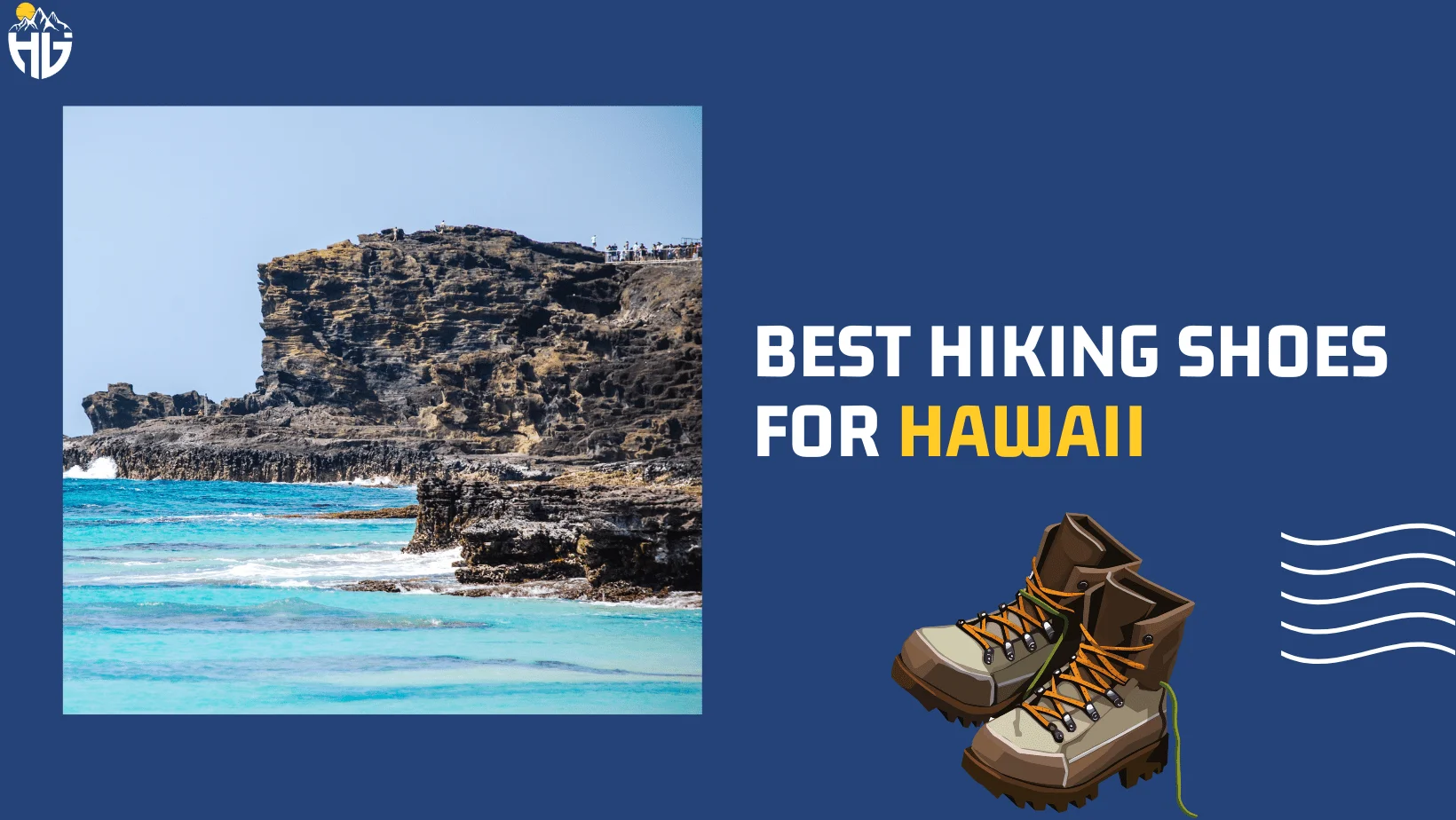How to Tell if Hiking Boots are Too Big
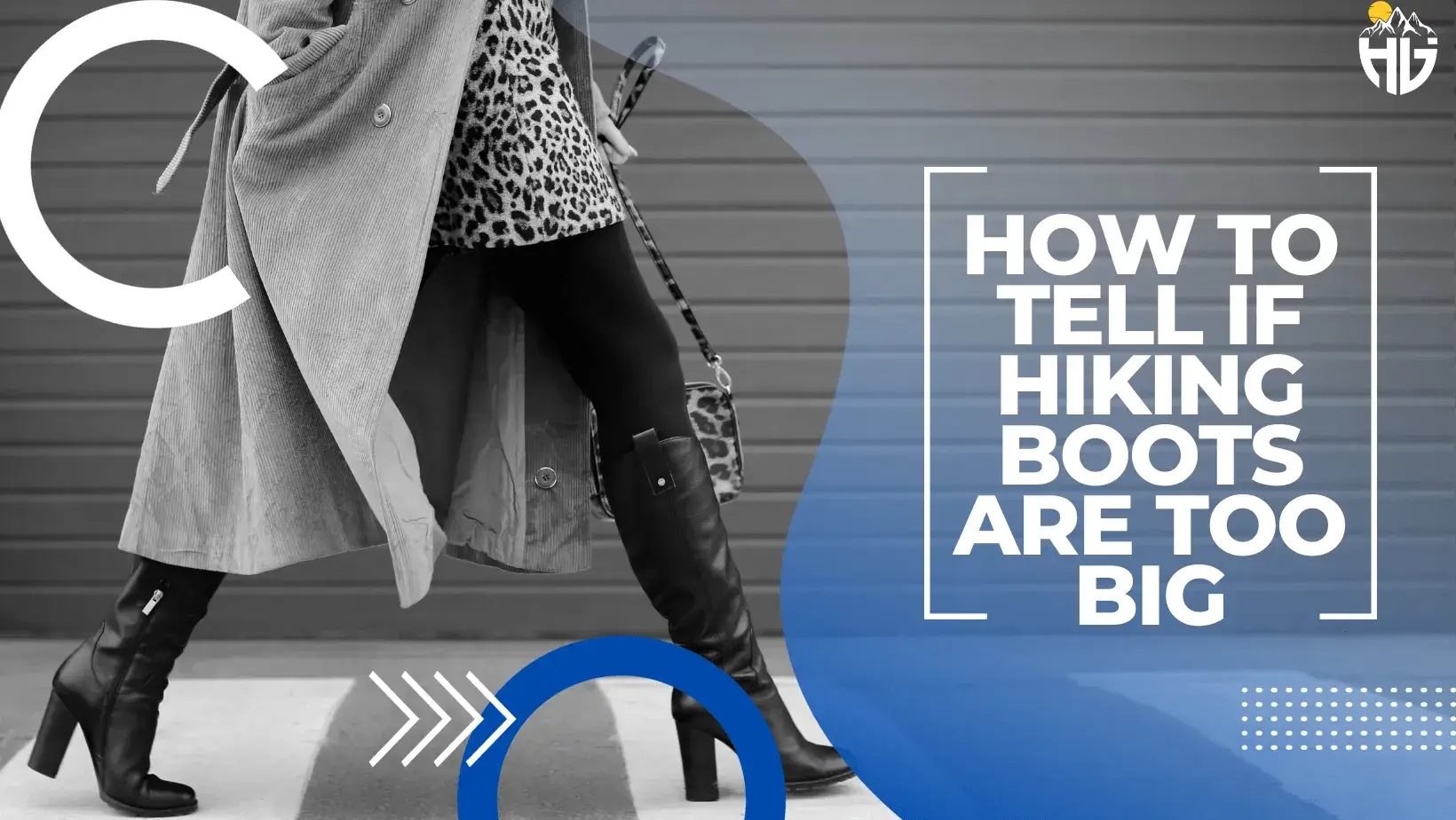
The importance of a proper hiking boot fit cannot be overstated. When your hiking boots fit like a glove, they provide stability, support, and protection on uneven terrain. Furthermore, well-fitting boots reduce the likelihood of developing painful hotspots or blisters, enabling you to trek longer distances with ease. If you feet feel uncomfortable on trails, then we can tell that your hiking boots are too big.
On the other hand, the dangers of wearing shoes that are too big are numerous. Oversized boots can cause your foot to slide inside the shoe, creating friction that leads to painful blisters. Additionally, the lack of stability provided by loose hiking boots increases the risk of ankle injuries, particularly on uneven or slippery trails. Your ability to navigate challenging terrain and maintain proper balance is significantly compromised when your boots fail to provide a secure fit.
How to Tell if Hiking Boots are Too Big?

Heel Lift and Movement
Recognizing Heel Lift
Heel lift occurs when your heel detaches from the boot’s base as you walk, compromising stability and increasing the risk of blisters. To test for heel lift, put on your hiking boots and walk around or try ascending a set of stairs. If your heel noticeably moves up and down then you can tell that your hiking boots are too big.
Consequences of Excessive Heel Movement
Persistent heel movement can lead to discomfort, rubbing, and ultimately blisters. Moreover, it increases the likelihood of ankle injuries, as your foot may not be adequately secured within the boot, compromising your ability to navigate challenging terrain.
Toe Box
Assessing the Right Amount of Toe Space
A fully fastened boot should leave some room for your toes to wiggle, but not so much that your foot slides within. To check how much room your toe has, press your thumb on the front of the boot while your foot is inside. You should be able to fit your thumb between your longest toe and the front of the boot, otherwise those boots are too big.
Issues Arising from Excessive Toe Box
When there’s too much room in the toe box, your foot can slide back and forth, creating friction and potentially leading to blisters or toe pain. This movement can also cause your toes to repeatedly hit the front of the boot, resulting in bruised toenails or even injuries during steep descents.
Blisters and Discomfort
Blisters as Warning Signs
These are more than just an annoyance – they can be an indication that your hiking boots are too big. If you consistently experience blisters on your heels or other areas of your feet after hiking, it may be time to reevaluate your boot size.
How Discomfort Relates to Boot Size
Discomfort during or after hiking can be another sign that your hiking boots are not the right size. Oversized hiking shoes may cause your feet to slide or rub against the interior, leading to painful hotspots, soreness, and fatigue.
Difficulty Lacing Securely
Proper Lacing Techniques for a Snug Fit
When lacing your hiking boots, the goal is to achieve a snug, secure fit without cutting off circulation. If you find it challenging to secure your boots tightly or feel like you need to over tighten the laces to prevent your foot from moving, this may be a sign to tell your hiking boots are too big.
The Impact of Loose Lacing on Stability
Difficulty in lacing your hiking boots securely can result in reduced stability on the trail. Loose laces may not provide the necessary support to keep your foot in place, leading to a greater risk of injury, especially on uneven terrain or during technical hikes.
How to Tell if Hiking Boots Fit Accurately?
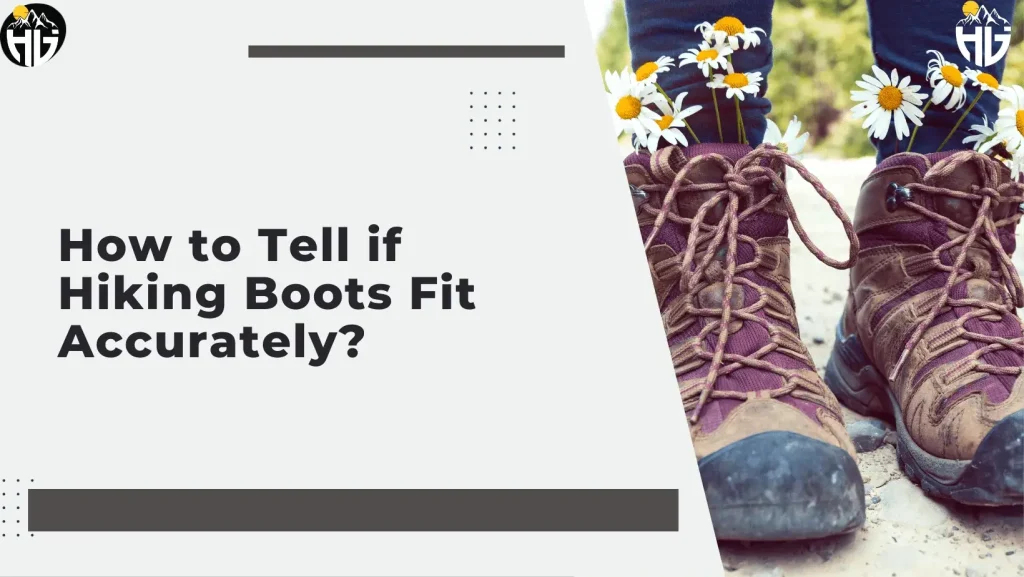
Measuring at Home
Preparing for Measurement
To measure your foot at home, you’ll need a sheet of paper, a pen or pencil, a ruler or measuring tape, and a bigger pair of socks similar to those you plan to wear while hiking. It’s best to measure your feet later in the day, as they can swell slightly after hours of standing or walking.
Tracing Your Foot
Place the paper on a flat surface and step on it with one foot, wearing your hiking socks. Carefully trace the outline of your foot, holding the pen or pencil perpendicular to the paper to ensure accuracy. Repeat with the other foot, as they may differ in size.
Measuring Your Tracings
Using the ruler or measuring tape, measure the length from the heel to the longest toe for both tracings. Also, measure the width at the widest part of your foot. Record the measurements and compare them to the sizing charts provided by the boot manufacturers to determine your ideal shoe size.
Getting Professionally Measured
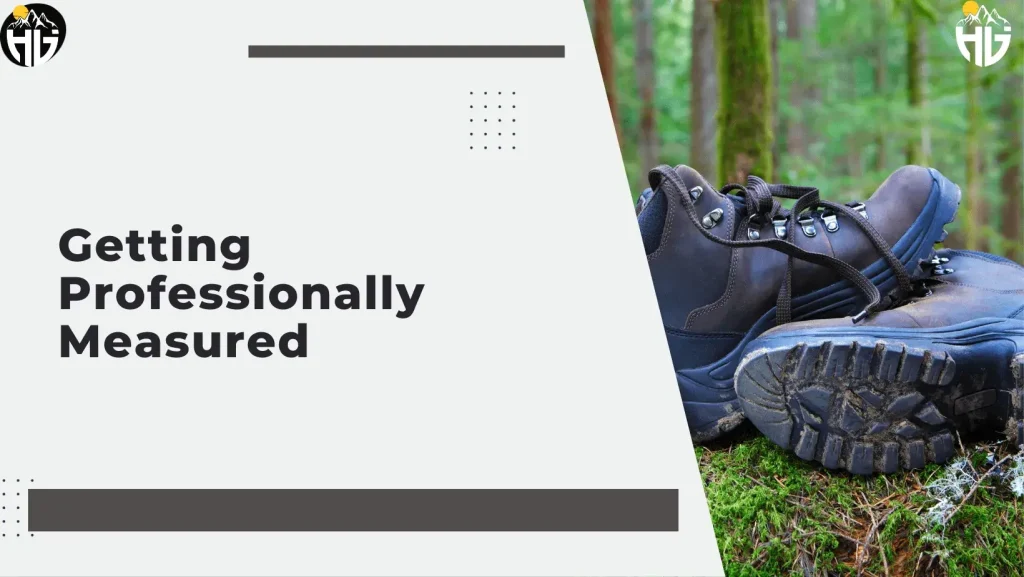
The Benefits of Professional Measurement
Before you buy boots, visiting a shoe store to get your feet professionally measured is an excellent way to ensure accuracy. Trained staff can assess your foot’s length, width, and arch type, providing valuable insights to make your boots fit properly.
Understanding Different Sizing Systems
Keep in mind that different brands may use various sizing systems. A professional measurement can help you navigate these differences and make informed decisions when choosing the perfect pair of hiking boots.
Trying on Hiking Boots In-Store
Test Multiple Sizes and Brands
When buying boots in-store, it’s wise to try multiple sizes, as well as different brands and models, since each may fit slightly differently. This allows you to find the best match for your feet, ensuring maximum comfort and support.
Mimic Real Hiking Conditions
Wear the same socks you plan to hike in and spend time walking around the shoe store to simulate real hiking conditions. Test the hiking boots on an incline if the store has a ramp or simulated trail. This will give you a better idea of how the boots will perform and feel during actual hikes.
Ask for Expert Assistance
Don’t hesitate to ask store staff for advice or recommendations before buying hiking boots. They have valuable knowledge and experience to help you find the ideal pair of hiking boots based on your specific needs, foot shape, and intended use.
Are Hiking Boots Supposed to be Big?

How Much Room Should I Have in My Hiking Boots?
When to Size Up
If you find that your toes are touching the front of the boot or feel cramped, consider sizing up. This is especially important for downhill hiking, as your toes will naturally slide forward during descents, increasing the risk of bruising or injury.
When to Size Down
If your feet are sliding within the boot or you’re experiencing excessive heel lift, you may need to size down. A snugger fit can help eliminate movement within the boot, reducing the risk of blisters and improving overall stability.
Adjusting Lacing Techniques
Secure Heel Lock
Experiment with different lacing techniques to achieve a more secure fit. A heel lock, for example, can help prevent heel lift by creating additional tension around the ankle. To achieve this, lace your hiking boots in a way that forms a loop between two eyelets, then thread the laces through the loop before tightening.
Customized Lacing Patterns
Feel free to customize your lacing pattern based on your unique foot shape and comfort preferences. For instance, if you have a high instep, you can skip an eyelet in the middle of the boot to reduce pressure on that area.
Trying Different Brands and Models
Brand-Specific Fits
Each brand and model of hiking boots may fit slightly differently due to variations in design, materials, and construction. Trying different options can help you find the perfect match for your feet, ensuring maximum comfort and support on the trail.
Exploring Various Boot Types
You may also want to explore different types of hiking boots, such as mid-cut or high-cut options, which provide varying levels of ankle support and protection. Consider your intended hiking terrain, distances, and personal preferences when making your selection.
Considering Insoles or Thick Socks
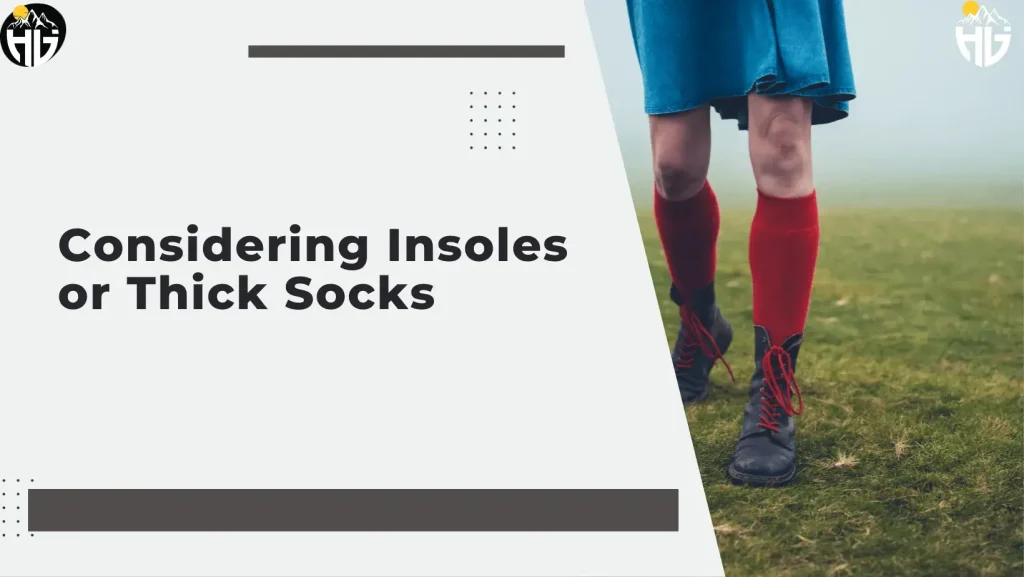
Custom Insoles for Enhanced Support
If you’re struggling to find a perfect fit, consider using custom insoles or over-the-counter arch supports. These can help improve the fit of your hiking boots by providing additional cushioning, arch support, and stability.
Thick Socks for a Snugger Fit
In some cases, wearing thicker socks may help improve the fit of slightly oversized hiking boots. Opt for socks specifically designed for hiking, as they provide cushioning, moisture-wicking, and temperature regulation to keep your feet comfortable throughout your hiking adventure.
How to Fix Hiking Shoes that are Too Big?

Insoles and Padding
Extra Cushioning for Improved Fit
Adding insoles or padding can help improve the fit of oversized hiking boots. High-quality insoles provide additional cushioning, arch support, and shock absorption, which can contribute to a snugger and more comfortable fit.
Strategic Padding Placement
For targeted adjustments, consider placing padding in specific areas where there is excessive space, such as the heel or the sides of the boot. This can help eliminate unwanted movement and improve overall stability.
Double Socking
Layering Socks for Added Thickness
Wearing two pairs of socks – a thin liner sock and a thicker hiking sock – can help fill the extra space within oversized hiking boots. This technique not only helps create a snugger fit but can also reduce friction and the risk of blisters.
Choosing the Right Sock Materials
Opt for socks made from moisture-wicking and breathable materials, such as merino wool or synthetic blends, to ensure your feet stay dry and comfortable during your hikes.
Ankle Support Braces
Enhanced Stability with Ankle Braces
Ankle support braces can be worn inside your hiking boots to improve stability and reduce excessive movement within oversized shoes. These braces provide additional support to your ankles, making them particularly useful for avid hikers prone to ankle injuries or those navigating challenging terrain.
Finding the Right Brace
When selecting an ankle brace, look for a lightweight, breathable, and comfortable design that fit properly within your hiking boots. It’s important to choose a brace that doesn’t restrict your natural range of motion.
Expert Advice and Potential Alternatives

Consult a Professional
If you’re still struggling to achieve a proper fit for your new boots, consider seeking advice from a professional at an outdoor or footwear store. They can help you identify potential solutions or recommend alternative hiking boots that may better suit your needs.
Consider Boot Exchanges or Returns
You may be able to exchange your new hiking boots for a smaller shoe size or return them for a refund. Before buying hiking boots, check the store’s return policy, and be prepared to explain the issues you’ve experienced with the shoes. You will increase your chances of a successful exchange or return.
Final Verdict
In summary, finding the perfect fit for your hiking boots is crucial for a comfortable, safe, and enjoyable outdoor experience. A proper fit provides stability, support, and protection on various terrains, while oversized boots can lead to blisters, discomfort, and increased risk of injury. By understanding the signs to tell if your hiking boots are too big, you can set yourself up for success on the trail.
Remember to consider factors such as heel slippage and lift, big toe space, and overall comfort when assessing the fit of your hiking boots. Experiment with different lacing techniques, try various brands and models, and consider using insoles or thicker socks for a snugger fit. If necessary, consult a professional or seek out potential alternatives to ensure your hiking boots provide the support and comfort you need.
Frequently Asked Questions
What happens If I Wear Bigger Hiking Boots?
Wearing bigger hiking boots can cause issues such as heel lift, foot movement within the boot, and discomfort. Excessive movement can lead to blisters, bruised toenails, and fatigue. Additionally, oversized boots may compromise ankle support and stability, increasing the risk of injury on uneven terrain or during technical hikes.

M. Fahad Sajjad
Founder & CEO
at
Meraki Writes
Meraki Writes is a distinguished content marketing agency committed to
delivering exceptional content for businesses and online platforms.
With a dedicated team of skilled writers and editors, Meraki Writes
consistently produces high-quality articles, ensuring client satisfaction
and audience engagement. The same team of professionals is responsible
for crafting each insightful and well-researched article on Hike Genius, a reputable hiking niche website.



